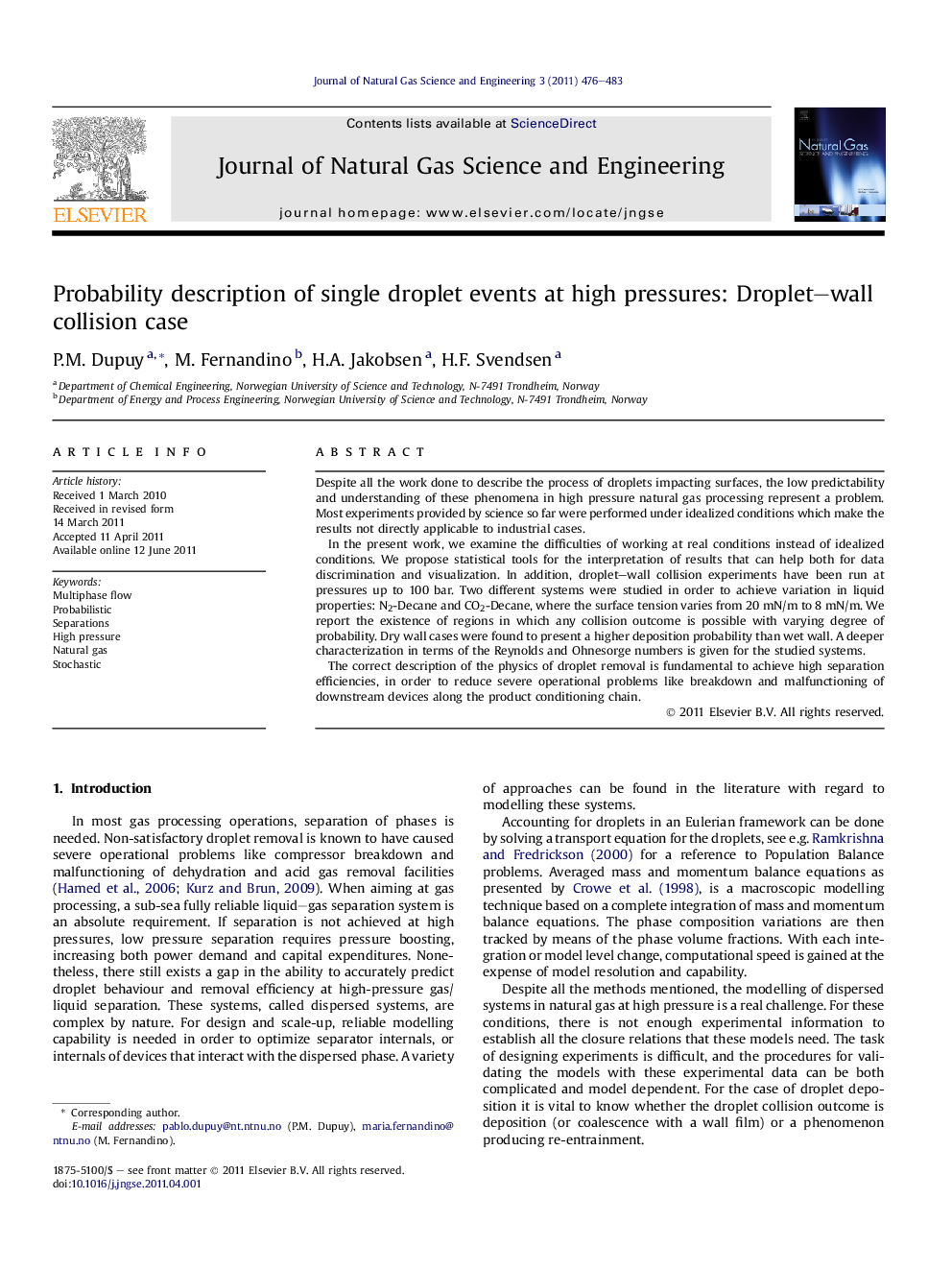| Article ID | Journal | Published Year | Pages | File Type |
|---|---|---|---|---|
| 1758283 | Journal of Natural Gas Science and Engineering | 2011 | 8 Pages |
Despite all the work done to describe the process of droplets impacting surfaces, the low predictability and understanding of these phenomena in high pressure natural gas processing represent a problem. Most experiments provided by science so far were performed under idealized conditions which make the results not directly applicable to industrial cases.In the present work, we examine the difficulties of working at real conditions instead of idealized conditions. We propose statistical tools for the interpretation of results that can help both for data discrimination and visualization. In addition, droplet–wall collision experiments have been run at pressures up to 100 bar. Two different systems were studied in order to achieve variation in liquid properties: N2-Decane and CO2-Decane, where the surface tension varies from 20 mN/m to 8 mN/m. We report the existence of regions in which any collision outcome is possible with varying degree of probability. Dry wall cases were found to present a higher deposition probability than wet wall. A deeper characterization in terms of the Reynolds and Ohnesorge numbers is given for the studied systems.The correct description of the physics of droplet removal is fundamental to achieve high separation efficiencies, in order to reduce severe operational problems like breakdown and malfunctioning of downstream devices along the product conditioning chain.
► Probabilistic map calculation from multidimensional discrete events. ► It is highly suitable for observations presenting large dispersion. ► This is the case for the behaviour of a liquid dispersed phase in a high pressure gas stream. ► These results could not have been obtained if a boundary tracing method was used instead.
